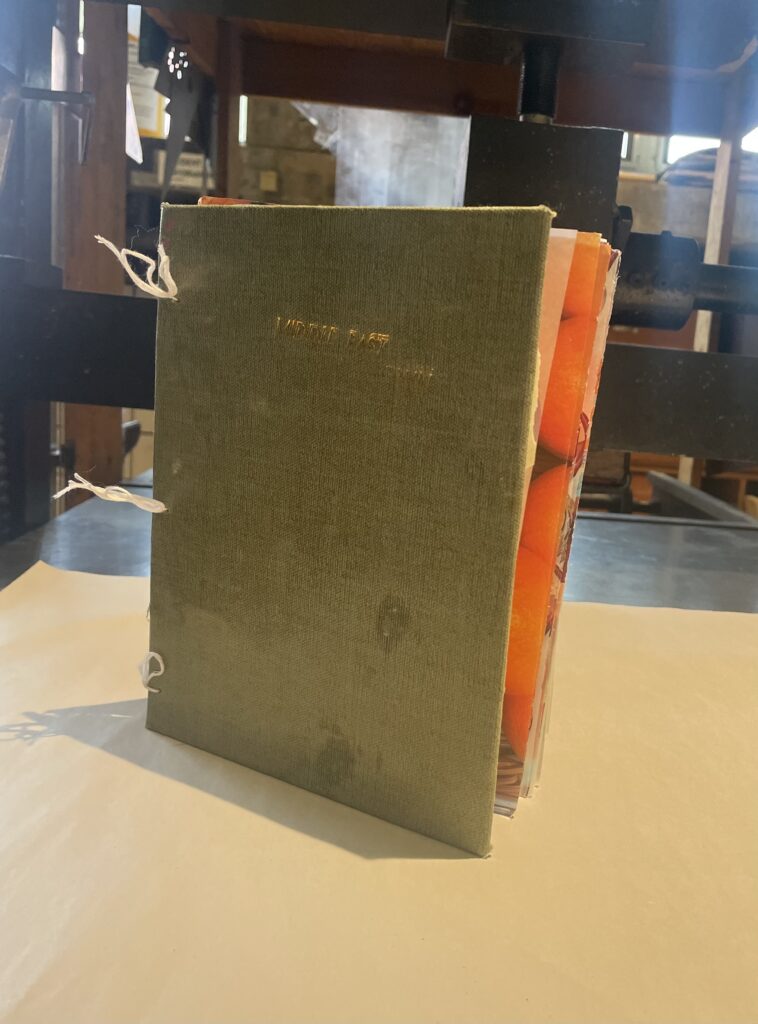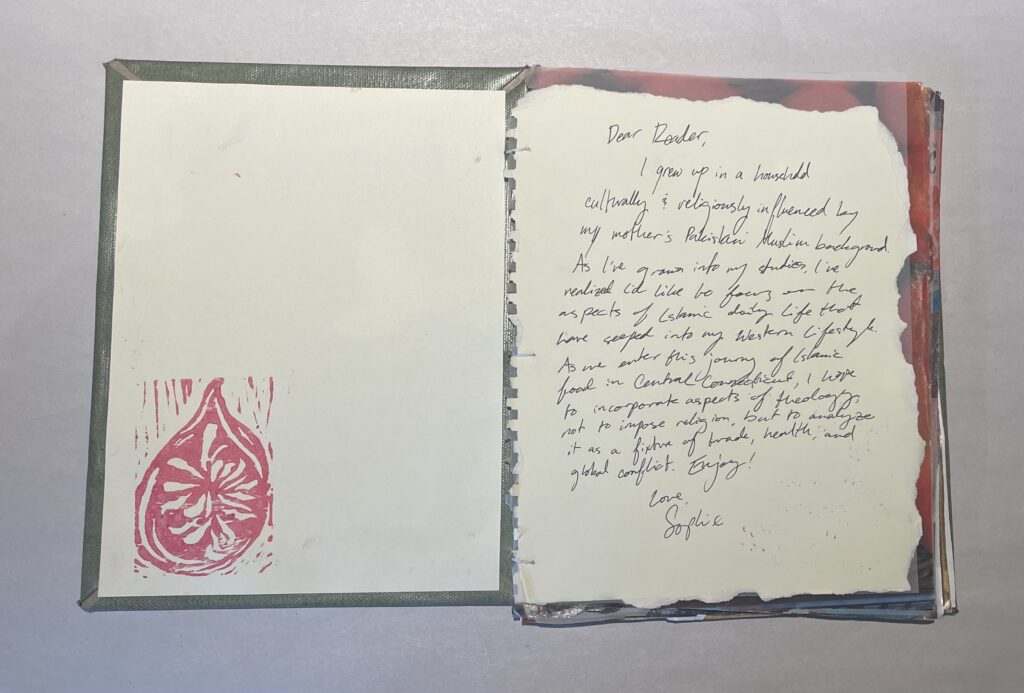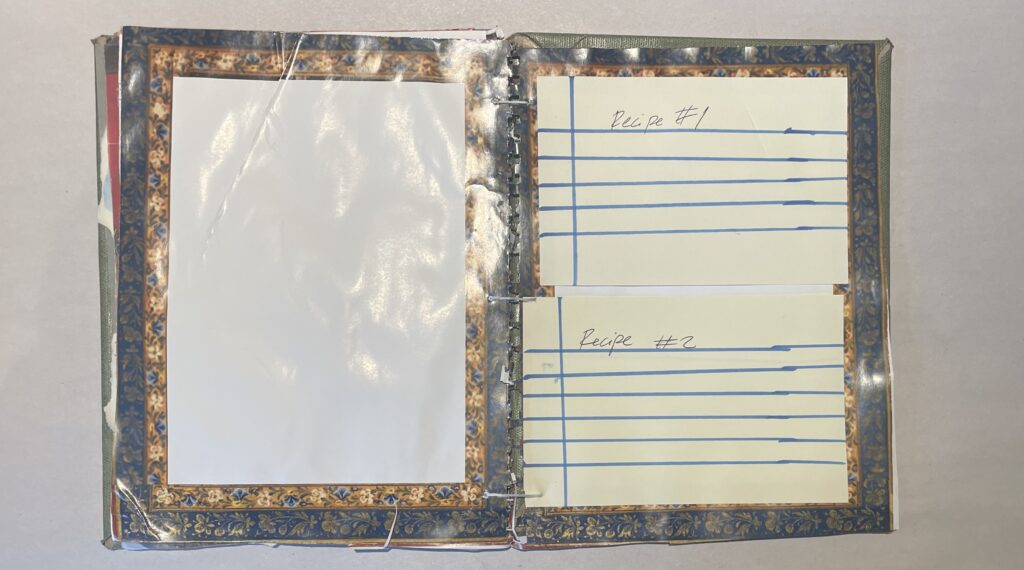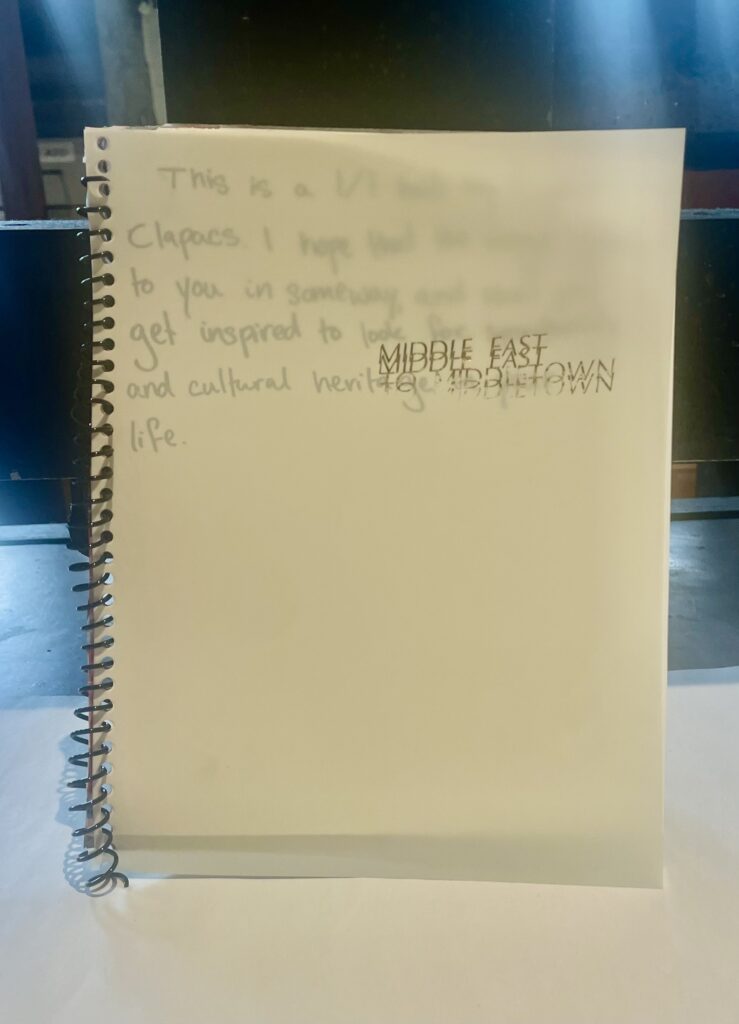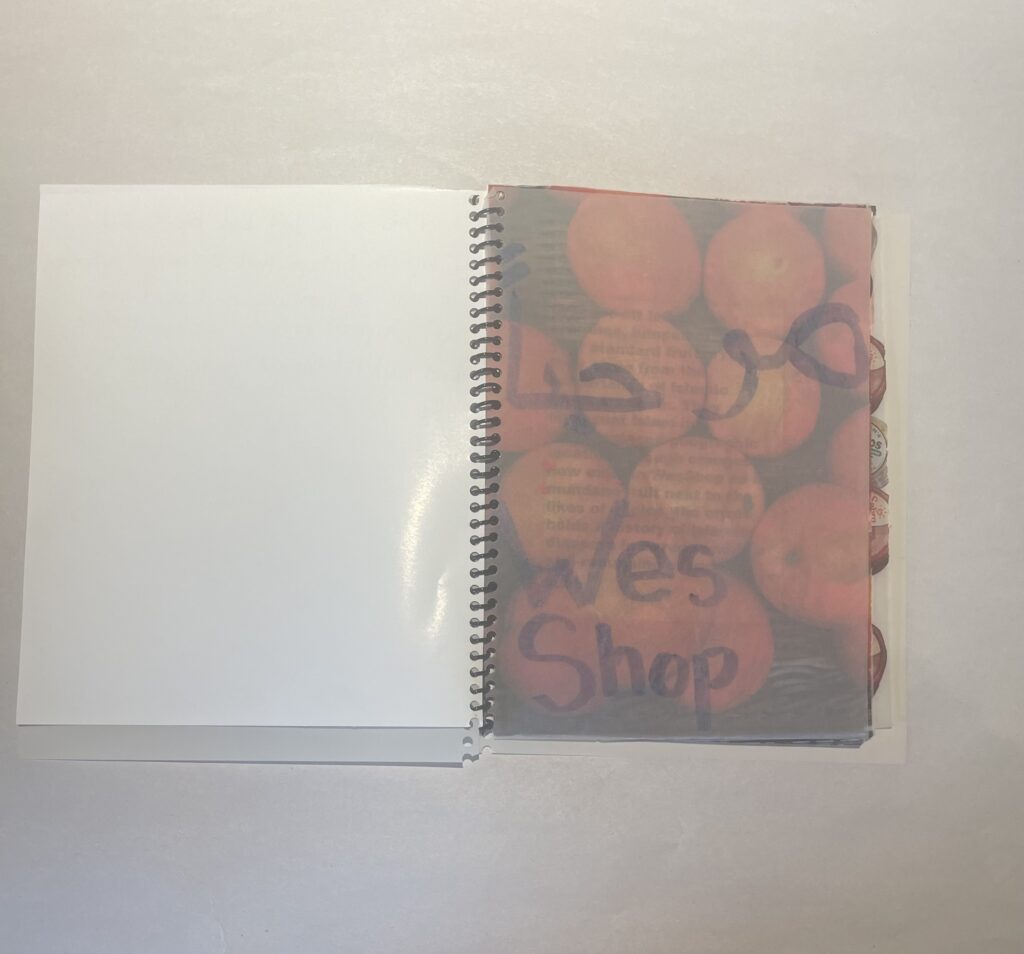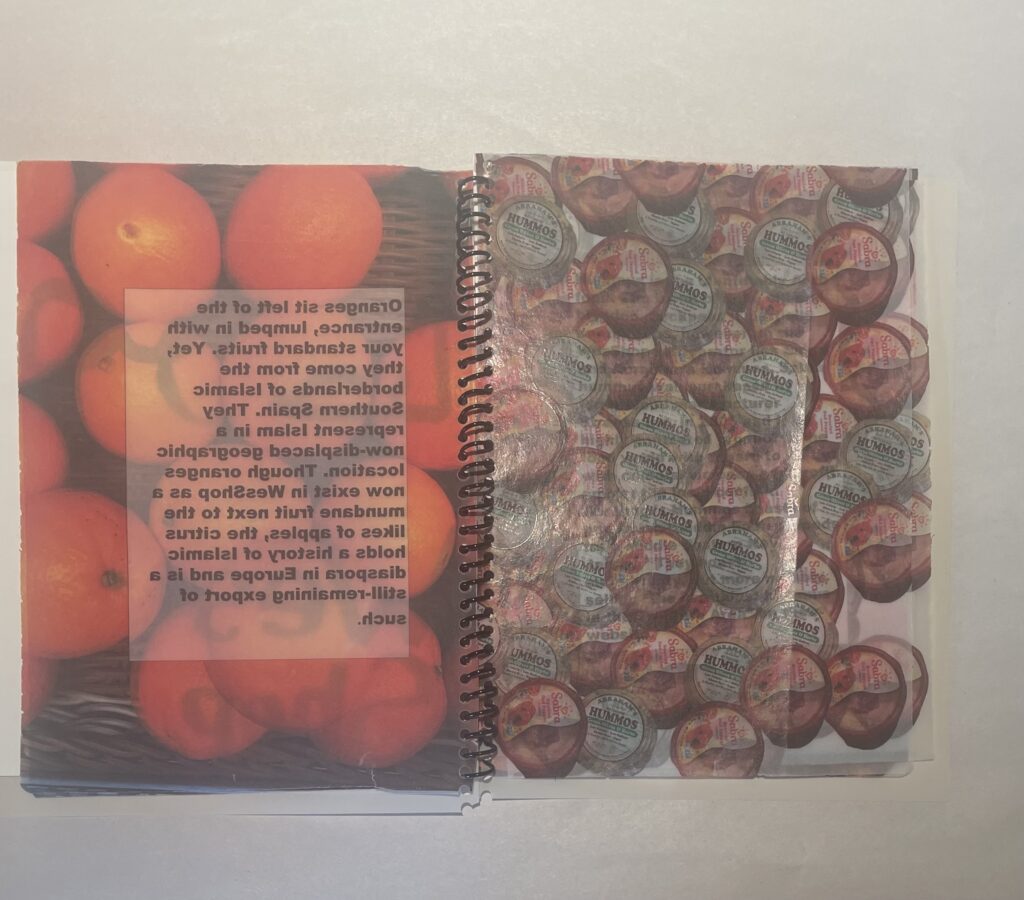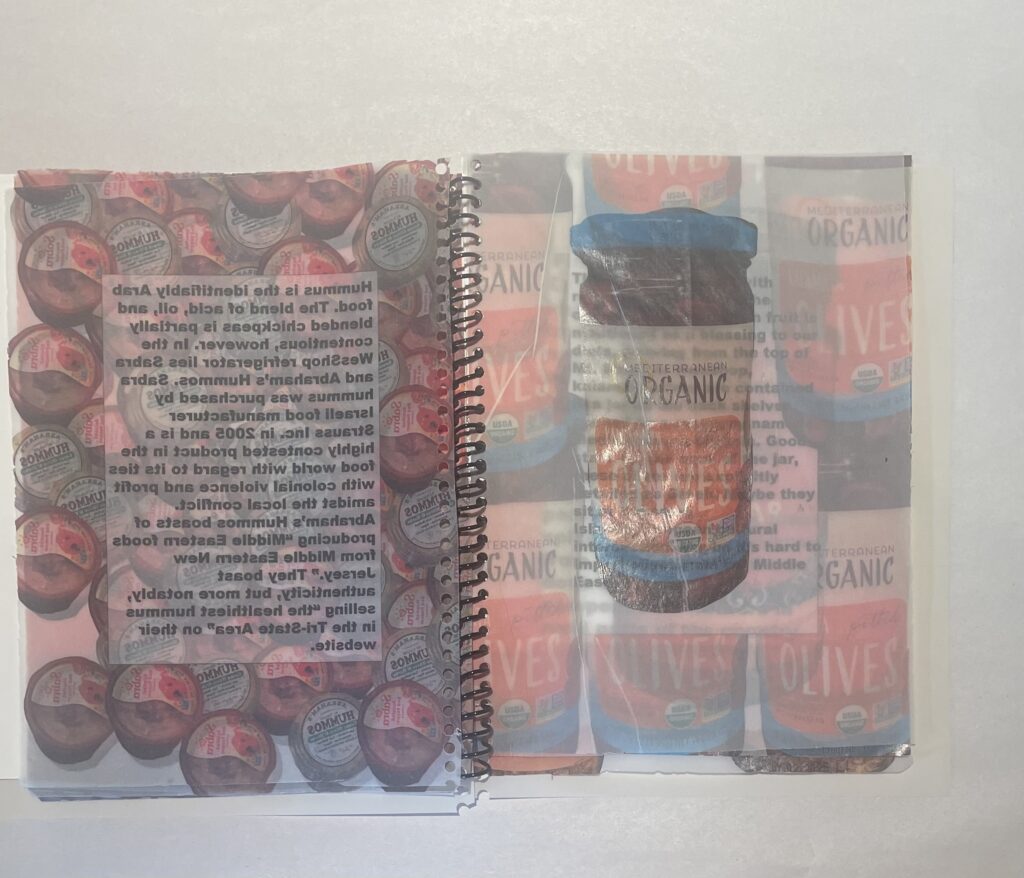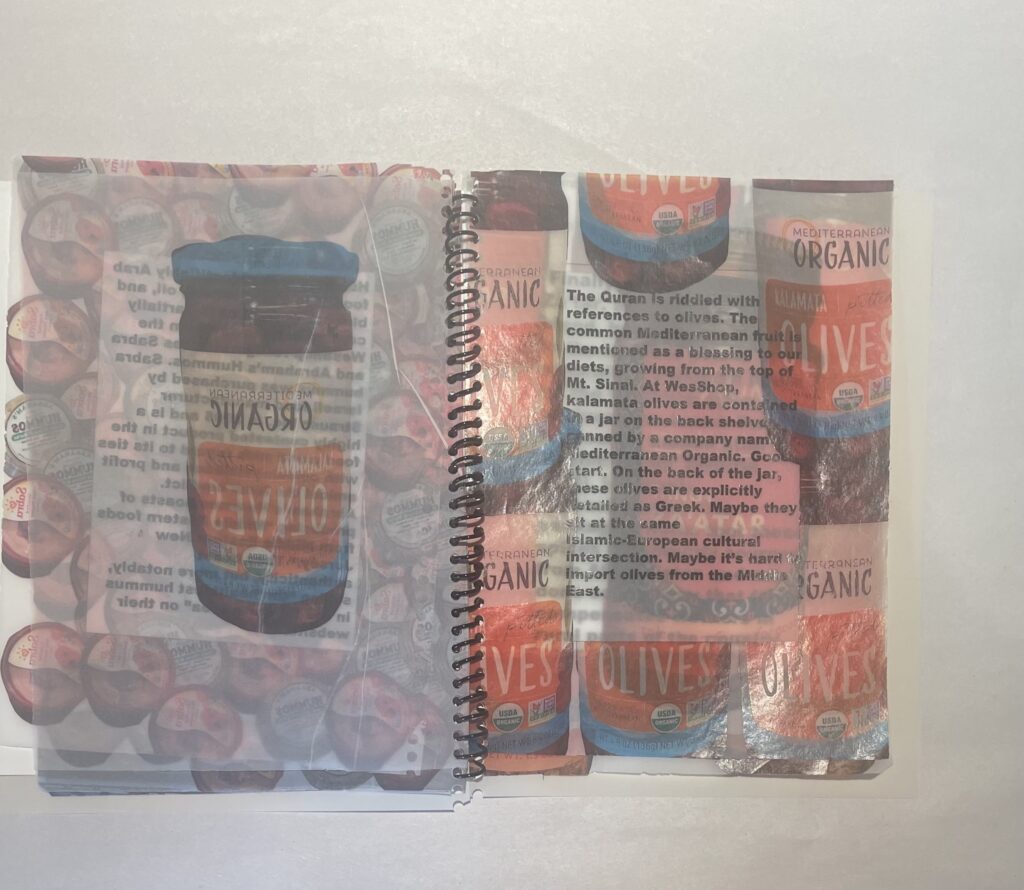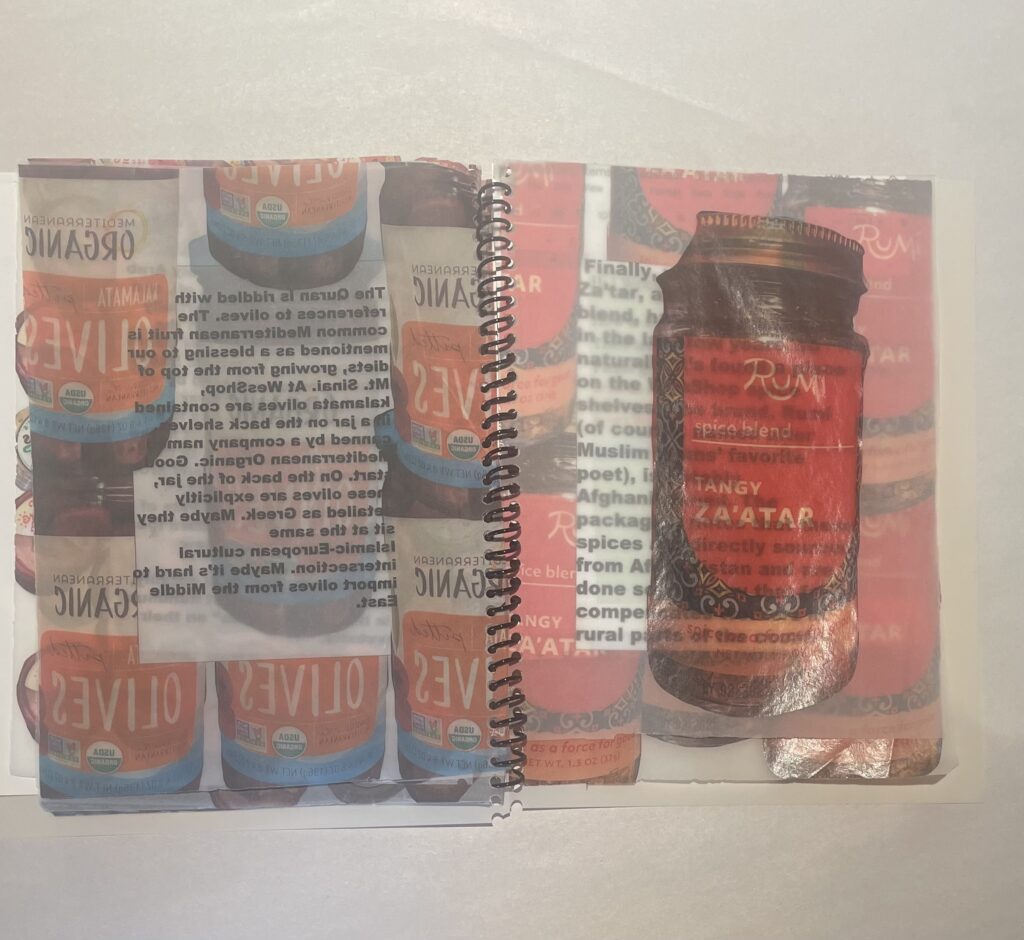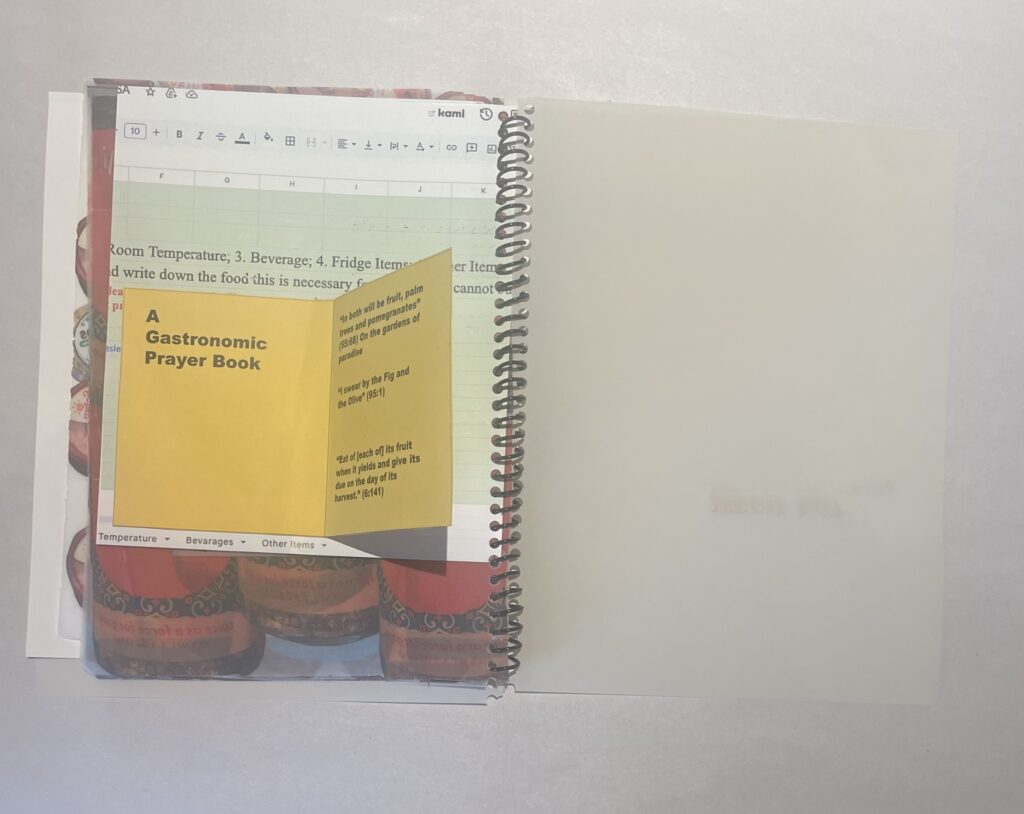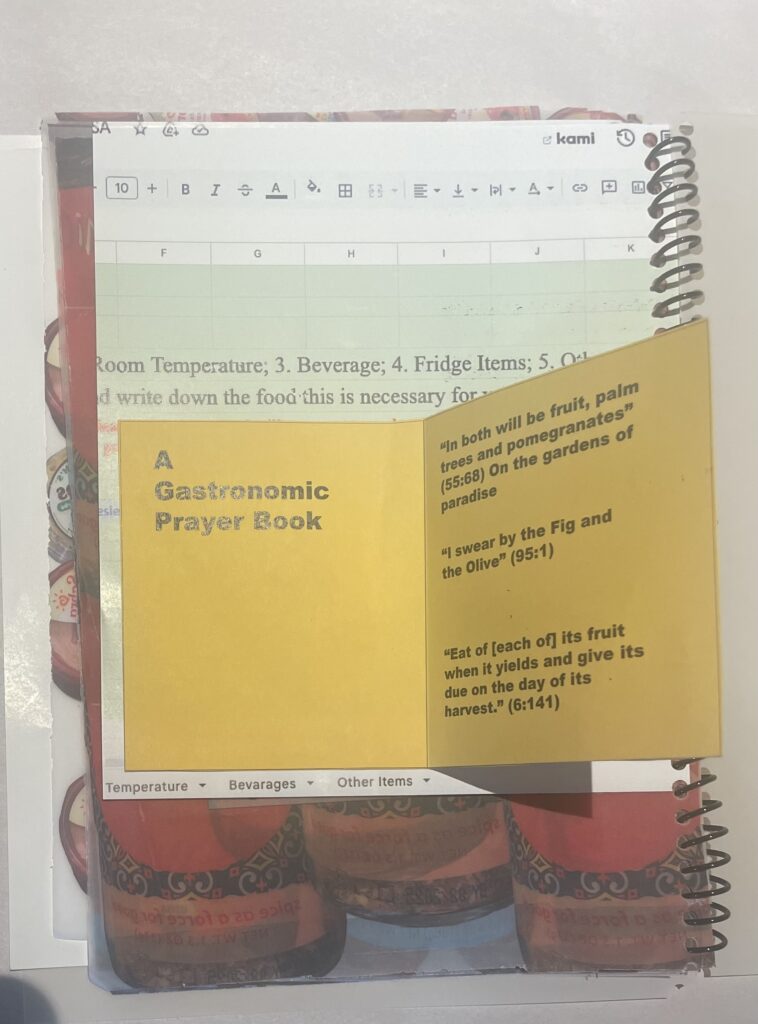When deciding what I would want for this project, I had originally fixated on food. More specifically, I wanted to look at the relationship between food and health at Wesleyan. After a long search down that path, I returned to theology and cultural ties to religion as a stronger point of interest of mine in relation to on-campus food. The ultimate goal was clear: to visually represent Wesleyan’s ties to Islamic and Arab cooking. I honed in on WesShop as a marketplace for cultural exchange on campus. I traced back the origins of specific brands of foods traditionally thought of in the context of Islamic cooking and history. This project is meant to deviate from conventional written ethnography in two senses. The first is that the final book does not rely on much on text. The text serves to guide the reader, but not to be over-expository or exist as it would in a conventional book. Secondly, this ethnography doesn’t aim to be fully anthropocentric. The focus on food as the primary subject matter is meant to indicate ties to theology, trade, and geopolitical relations without discussing these matters from the lens of the human.
The above shows certain pages and design elements from the preliminary mock-up of the book. The hardcover, hand-lino-cut fig stamp, and interactive recipe elements all were scrapped for the final. As I worked more to finalize this vision, I began to feel more compelled to curate an aesthetic narrative to lead readers into this contact zone between the seemingly culture-less WesShop and the culturally rich Islamic marketplace.
Above is a digitized copy of the final edition of Middle East to Middletown. I hope for the book to speak for itself in that. itis not meant to guide the reader to any specific conclusion, but rather, to present connecting ideas to a central topic which hopefully raises personal interpretations. The primary element features a fake WesShop pantry, with each highlighted food accompanied by a brief explanation of its origin and relationship in a theological conversation. The book ends with images of the ways to request items for WesShop, as well as a prayer book with allusions to these still contemporary foods. The change in physicality from the preliminary copy of this book comes from a desire to bridge the sterility of American commerce with the liveliness of the Arab marketplace. WesShop represents this contact zone for these two, and the materiality of synthetic and hand-made materials is meant to evoke this sentiment.
